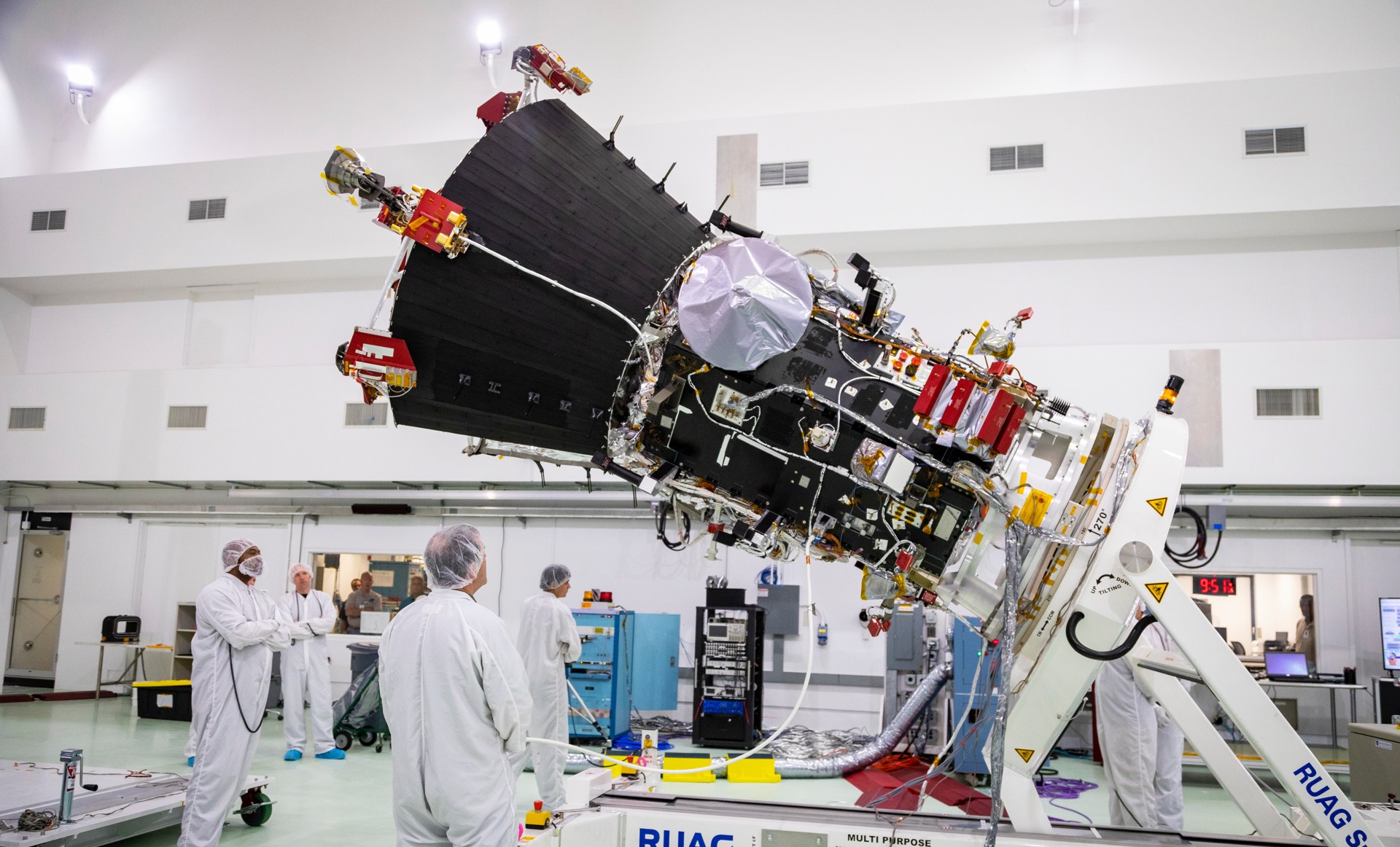Launched in 2018, the APL-built Parker Solar Probe is on a record-setting trek through the inner solar system, set to dip within 4 million miles from the Sun’s surface while answering decades-old questions about solar physics and the effects of our star’s activity on Earth.
This is exploration to the extreme — and Johns Hopkins technology is behind it.
Defending Parker from the intense heat and energy of the Sun is the Thermal Protection System (TPS), an 8-foot-diameter, 4.5-inch thick shield. Crafted in a collaboration between APL and the Whiting School of Engineering, the shield itself consists of a carbon graphite sheet affixed to carbon foam blocks. During Parker’s closest encounters with the Sun, the surface temperature of the shield will exceed 2,500 degrees Fahrenheit. But the scientific instruments behind it will stay at about room temperature — albeit a really warm room.
The front and back faces of the heat shield are made of sheets of carbon-carbon, a lightweight material with superior mechanical properties especially suited for high temperatures. At less than a tenth of an inch thick, the two carbon-carbon sheets are thin enough to bend, even if they were laid on top of each other. Between them is the carbon foam, typically used in the medical industry for bone replacement. This sandwich design stiffens everything up—like corrugated cardboard—while allowing the TPS to weigh in at only about 160 pounds.
The foam also performs the heat shield’s most essential structural functions. Carbon itself conducts heat, but carbon foam is 97 percent air. In addition to cutting the weight of the spacecraft to help it get into orbit, the foam structure means there’s little material for heat to travel through.
Yet all of the carbon foam’s impressive heat-dispersing properties weren’t enough to keep the spacecraft at safe operating temperatures. Because there’s no air in space to provide cooling, the only way for material to expel heat is to scatter light and eject heat in the form of photons. This meant another layer of protection was necessary: a white coating that would reflect heat and light.
For that, APL turned to the Whiting School’s Advanced Technology Laboratory — tapping its team of experts in high-temperature ceramics, chemistry and plasma spray coatings. After extensive engineering and testing, the team settled on a coating based on bright white aluminum oxide. To keep the coating from reacting with the carbon of the heat shield – which in high temperatures would actually darken the coating — the engineers separated the materials with a super-thin layer of tungsten. They added nanoscale dopants to make the coating whiter and to inhibit the expansion of aluminum oxide grains when exposed to heat.
For creating the first-ever spacecraft designed to fly through the inferno of the sun’s corona – which Parker has done several times already – APL earned a place on Fast Company magazine’s list of the world’s most innovative companies in 2018.

